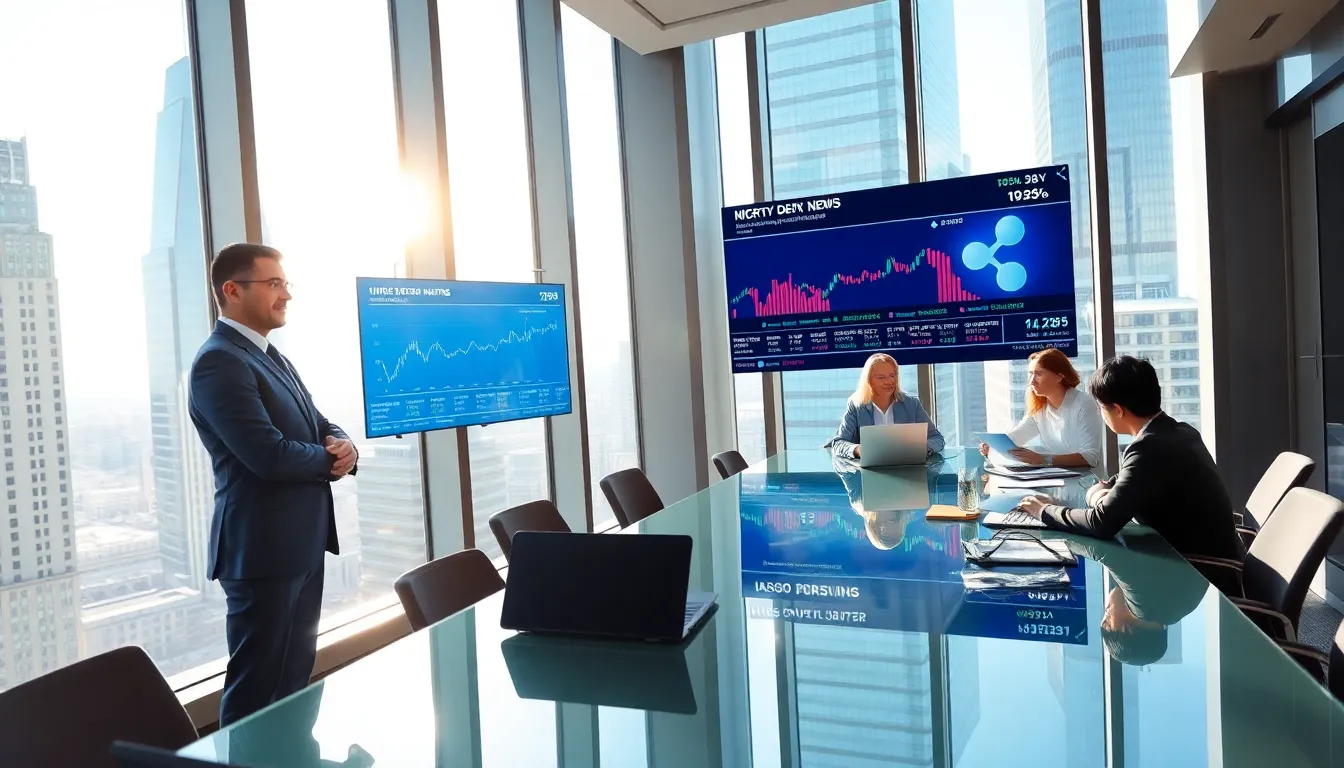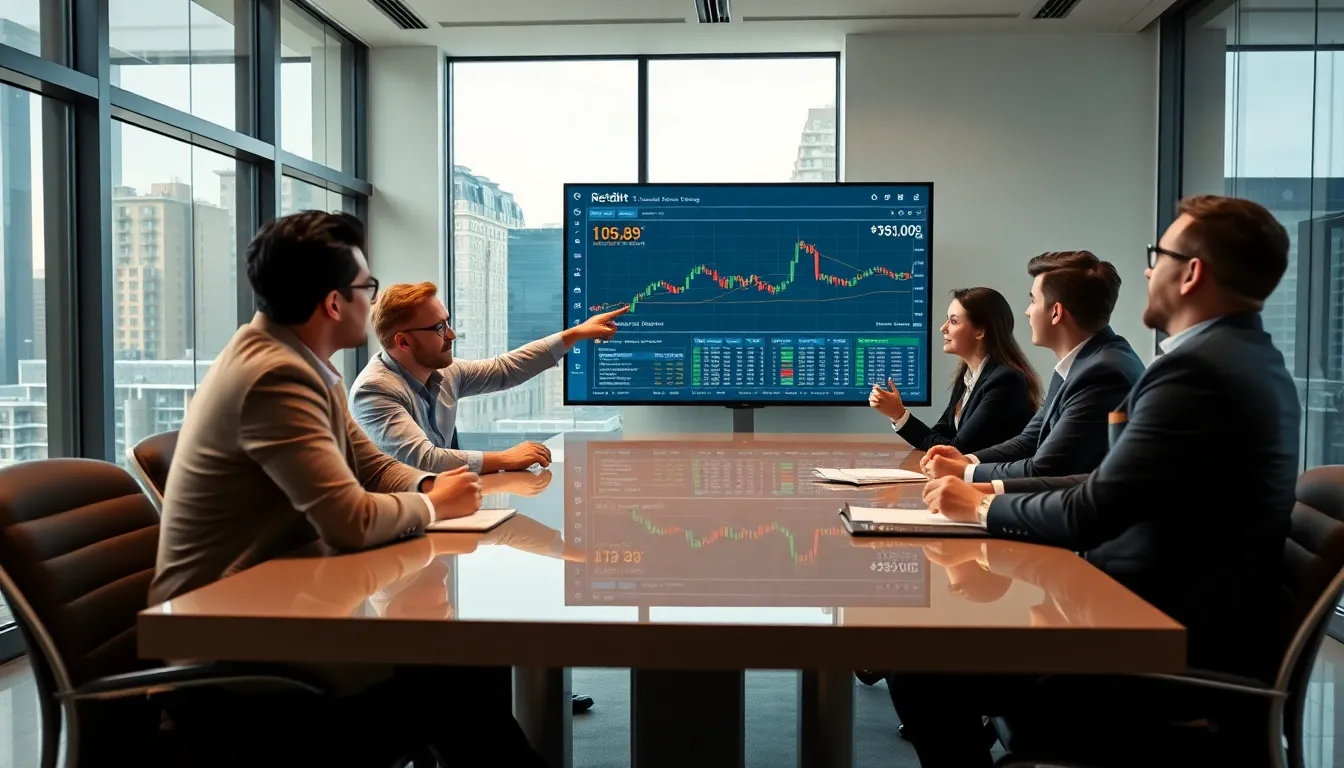In a world where everyone’s a click away from fame, mastering on-screen presence is no longer just for the Hollywood elite. Whether it’s a Zoom meeting or a TikTok dance challenge, looking and sounding great on camera can make all the difference. Who wouldn’t want to captivate their audience and leave them wondering how they pulled it off?
Table of Contents
ToggleUnderstanding On-Screen Presence
On-screen presence plays a vital role in engaging audiences across various digital platforms. It reflects how a person appears and communicates while on camera, impacting their effectiveness. Key elements include body language, vocal tone, and facial expressions. An effective on-screen presence captivates viewers, making them more likely to stay engaged.
Body language serves as a fundamental aspect. Maintaining eye contact enhances connection, while open gestures convey confidence. Several studies suggest that confident body language leads to a more positive audience perception. Vocal tone also significantly affects how messages resonate. A varied pitch and clear articulation keep the audience attentive.
Facial expressions convey emotions, enhancing relatability. Smiling can create a warm atmosphere, encouraging viewers to engage. A natural demeanor reduces distractions, allowing the content to shine. Practicing in front of a mirror helps individuals become more aware of their expressions and body movements.
Preparation enhances on-screen presence. Familiarizing oneself with the content allows for smoother delivery. Practicing in front of a camera ensures familiarity with the medium. Receiving feedback from peers can provide insights for improvement.
Lighting and background should not be overlooked. Proper lighting highlights features, ensuring clarity. A clean, uncluttered background avoids distractions and maintains focus on the speaker.
Understanding these components empowers individuals to cultivate a powerful on-screen presence. Mastery comes from practice and intentionality. Frequent engagement on platforms like Zoom and TikTok further enhances skills in a dynamic environment.
Importance of On-Screen Presence

On-screen presence plays a crucial role in today’s digital communication. Engaging an audience hinges on how effective one appears and interacts through the screen.
Impact on Engagement
Effective on-screen presence boosts audience engagement significantly. Body language, such as nodding or using hand gestures, reinforces key points and invites viewer participation. Vocal tone variability captures attention, encouraging listeners to stay focused. Eye contact creates a personal connection, making individuals feel more involved in the conversation. A speaker’s enthusiasm can energize an audience, leading to more interactive sessions. For example, a recent study found that presenters with strong on-screen presence saw a 30% increase in audience interaction during webinars.
Influence on Audience Perception
On-screen presence deeply influences audience perception. First impressions occur within seconds, highlighting the importance of appearance and demeanor. Welcoming facial expressions enhance relatability, inviting trust. An individual’s posture conveys confidence, reinforcing credibility in the content shared. Research indicates that viewers attribute authority to speakers who demonstrate strong presence; this perception often leads to higher retention of information. For instance, 70% of survey respondents reported a preference for presenters who exhibit energetic and engaging mannerisms.
Key Elements of On-Screen Presence
Mastering on-screen presence involves several key factors that significantly enhance how an individual engages with their audience. Attention to body language, vocal delivery, and visual appearance plays a crucial role in achieving an impactful presence.
Body Language
Effective body language communicates confidence and engagement. Maintaining eye contact fosters connection, while open gestures create an inviting atmosphere. Keeping a relaxed posture makes the speaker appear more approachable. Incorporating purposeful movements can emphasize key points and help maintain audience interest. Studies indicate that speakers using strong body language can increase viewer engagement by up to 40%. Assessing feedback from practice sessions can improve body language even further.
Vocal Delivery
Vocal delivery encompasses tone, pitch, and pace. Variability in tone keeps the audience engaged and highlights important information. Speaking clearly with the right pace ensures comprehension. Intonation adds emphasis to key messages, generating enthusiasm. Using pauses strategically allows important points to resonate; this technique aids the audience’s retention of information. According to research, presenters who vary their vocal delivery experience a 25% increase in audience retention and reaction.
Visual Appearance
Visual appearance serves as another critical aspect of on-screen presence. Dressing appropriately for the context enhances credibility. Clean, professional attire reinforces the speaker’s message and reflects respect for the audience. Additionally, attention to lighting improves visibility, while a clutter-free background helps maintain focus. Consistent personal grooming contributes to a polished look, establishing a positive first impression. Statistics show that 60% of viewers associate visual appeal with the content’s value.
Tips for Enhancing On-Screen Presence
Improving on-screen presence involves a combination of practice, feedback, and audience adaptation. These strategies empower individuals to engage effectively with viewers.
Practice and Preparation
Preparation significantly impacts on-screen performance. Familiarity with material enables smoother delivery, increasing confidence. Regular practice in front of a camera helps identify areas for improvement. Utilize rehearsal techniques, including video recordings for self-evaluation. Practicing in different settings familiarizes speakers with varying environments, enhancing adaptability. Consistently focusing on timing, vocal tone, and body language boosts overall presence and effectiveness.
Utilizing Feedback
Feedback serves as an essential tool for enhancement. Seeking constructive criticism from peers or mentors provides valuable insights into areas needing improvement. Recording presentations and analyzing them helps identify strengths and weaknesses. Incorporate feedback into future practices to refine performance. Engaging with audience reactions fosters a deeper understanding of effective techniques. Adaptation based on feedback leads to more impactful presentations and increased engagement.
Adapting to Different Audiences
Understanding audience dynamics enhances communication effectiveness. Tailor content style and presentation techniques according to the audience’s preferences. Monitor audience reactions in real-time to gauge engagement levels, which enables dynamic adjustments. Utilizing interactive elements, like polls and Q&A, can significantly boost participation. Recognizing cultural or demographic differences also aids in connecting with diverse viewers. Being adaptable fosters a memorable experience, increasing audience retention and connection.
Mastering on-screen presence is more than just looking good; it’s about creating meaningful connections with the audience. By focusing on body language vocal delivery and visual appearance individuals can significantly enhance their effectiveness on camera.
Regular practice and preparation are key to building confidence and ensuring a smooth presentation. Engaging with the audience through interactive elements can transform a standard presentation into a dynamic experience.
With the right techniques and intentionality anyone can cultivate a powerful on-screen presence that not only captivates but also leaves a lasting impression. Embracing these strategies will lead to greater audience engagement and a more impactful communication experience.





